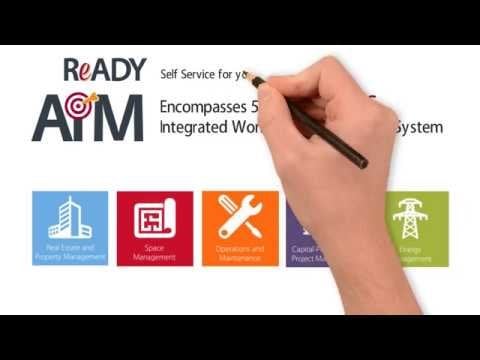What is utility management software, and do universities need it?

Paul Sharp

It’s the word on everybody’s lips – but it’s more than just a trend. Sustainability is a very real and legitimate concern, with increasing pressure on institutions all over the world to reduce their energy consumption.
This is particularly pertinent in the higher education sector. In 2019, a report by QA Education revealed that universities could save up to £2.2 billion on energy bills by 2035. The reason? Upgrades and better access to more energy-efficient technology.
But while this may sound costly and require capital project planning, there are also short-term steps higher education institutions can take to reduce their bills.
Introducing: utility management software
One of the best ways to reduce energy consumption without huge capital expenditure is to gain better visibility. This is where utility management software can really help higher education institutions.
If you manage a portfolio of university properties, you might have come across the following challenges:
Understanding your utility bills
It’s hard enough trying to make sense of a single energy bill – finding the energy meter and determining what the numbers mean, and how these equate to how much you pay. Now imagine that on a much larger scale – calculating water, gas, and electricity across a large portfolio of higher education properties.
An integrated system can help you to identify what these figures actually mean, bringing all data together in one broad dashboard and turning that data into usable information to gain insight and understanding of trends. By bringing all this information together you can establish an accurate baseline of current use and measure the effect of various initiatives against this.
Working with multiple suppliers
Perhaps you’ve got one electricity supplier serving a student hall of residence and another supplying a lecture hall. Maybe your life could be made easier if you could integrate your gas and electricity supplier.
The problem with using disparate energy vendors is that they seldom integrate with one another – making energy tracking and general utility management more difficult. Once again, utility management software can help to surmount the cumbersome interfaces and integration issues between these vendors. This will save you time switching suppliers, leaving all your data in one place.
As funding and resources become ever tighter for higher education institutions, we need to make sure our time is well spent. This is why there is so much more value in utility management software than just tracking energy alone. Save time and leave your staff freer to focus on what they should be doing – rather than manual tasks.
Keeping track of multiple locations
Far from the ongoing management of lecture halls, student accommodation, retail outlets and more, there’s also the setup. Once again, this takes time that facilities managers simply may not have.
Utility management software can help you to identify all locations served and any associated utilities accounts. This will help you to overcome tricky energy meter hierarchies and get the best value from your energy – which you can reinvest into the properties themselves.
Identifying energy usage patterns
Something that energy suppliers are notorious for is ‘estimating’ energy usage over the course of the year, which invariably works out in their favour. But we’re not managing a classic two up, two down house. We’re managing university properties, which means energy usage is going to be highly sporadic throughout the year.
For example, during term time, we will have the additional energy consumption from students staying on campus and lecturers using IT equipment and staffrooms. Out of term time, energy consumption in student halls will be far lower, but we still need to consider factors like running heating to prevent pipes freezing, or keeping retail outlets open.
Utility management software can help facilities managers to predict patterns based on this seasonality. Rather than using one clear-cut figure over the course of the year, we can use this software to forecast and look at trends, helping us to renegotiate with suppliers and monitor our energy usage. Not only will this save us money; it will help us to be more sustainable, too.
Managing energy expenditure
Another challenge for facilities managers and finance teams is invoicing. It can be more difficult to calculate internal energy rates or troubleshoot any potential problems. With data-led analytics and forecasting, utility management software can spot issues before they become a problem – helping to identify any sunk costs.
Finance teams in higher education institutions have got a full plate as it is. They need to deal with student loans and tuition fees, lease management and staff payroll, without having to get bogged down in utility management. Using software eliminates one more tedious manual task and helps to save money in terms of both energy expenditure and staff resource.
Features for higher education institutions
So, it’s all very well claiming that utility management software can help colleges and universities, but how does it do it? The benefits of the software all come down to a unique set of features, designed to make life easier for facilities managers, finance teams and more.
Utility rate calculator
Picture the scene. You’re a facilities manager manually collecting data from several sources – data that, in itself, has to be gathered manually by field staff taking meter readings. In addition, you need to look at university BAS systems and other electronic readings, then compile all of this into your calculations – without overlooking maintenance costs.
All of this manual work could take days. The AssetWorks utility rate calculator automatically collects this data from various sources and calculates the figures for you. It allows for added costs such as repairs and preventative maintenance, performing all these tasks in minutes – not days. What’s more, these adjustments are automatically carried over onto invoices, avoiding human error.
Forecasting tools
To save money in the long term, finance managers need to see how facilities are being used over the course of the academic year. With such sporadic energy usage patterns, there will invariably be opportunities to save money.
AssetWorks’ usage analysis dashboards help finance managers to look at any out-of-the-box spending. They can also look at tangential spending – for example, calculating on the basis of the utility itself, the category, or time period in which it’s being used.
This may help in other ways, too. For example, AssetWorks’ utility management software comes as part of a broader Integrated Workplace Management System. By drawing on this data, facilities managers can also present a business case for capital project planning – for example, convincing investors that a switch to a new energy supplier may save money in the long term.
Likewise, forecasting tools help to allocate funds more efficiently across a whole suite of higher education properties. By doing this we can:
- Allocate energy costs to a specific department or entity within the college or university
- Understand how energy efficient each building is
- Target areas for improvement to guide sustainability and capital planning
Automatic invoicing
We all know that costs are so much more complex than energy expenditure alone. There are associated costs such as maintenance and staff resource to consider, for example. With AssetWorks’ automated invoicing system, all of this is calculated and added to final bills.
This helps to offer more accurate forecasting and allocate funds for future, based on real data that hasn’t cost hours of finance managers’ time to gather. Time is money – and your finance teams could benefit enormously from automating this part of their role.
The implications for higher education institutions in the long term
Modern UK universities face a number of funding challenges in the 21st Century, in particular, in response to increased student demand.
While increased student numbers can present revenue opportunities, there are the variable costs that come with this. Meanwhile, there is external pressure from governments as student loans are tightened.
The bottom line is that, as universities, we need to monitor every penny we spend and make sure we’re getting the best value out of it. Energy management is a huge component of this. Higher education institutions can benefit from utility management software due to:
- Up to 5% in long-term savings thanks to increased energy consumption visibility
- Up to 13% lower energy consumption over the academic year
- A return on investment in as little as 12 months
Sustainability first
Beyond the brass tacks cost savings, higher education institutions can also benefit from improved sustainability. We’ve seen first-hand how sustainability has moved from a buzzword to a top priority for governments, organisations, and people from all walks of life.
The cause has made its way into the higher education conversation, too. In January 2020, more than half of UK universities committed to “divesting from fossil fuels”. Seventy-eight out of 154 claimed they wanted to move away from big oil.
This is an admirable move but we also need to change our processes in manageable steps. Utility management software can help higher education institutions identify where their energy consumption may be too high, presenting a business case for long-term investment. For a better future, we need to utilise both data analytics and larger investment projects in tandem.
Visibility is the first step. For more information, contact our higher education team today.
Subscribe to AssetWorks' Blog & Newsletter
We send out periodic updates to our facilities community.
Read On

Why capital projects in higher education are no worries
The face of higher education is changing by the day. Not only are we seeing ever-evolving teaching...
Learn more arrow_forward
Why is space planning important to universities in Australasia?
Both in the age of COVID-19 and in general, space planning has risen in prominence to become one of...
Learn more arrow_forward
What is AiM Software and Do You Mean the AssetWorks IWMS?
You're likely here because you typed something to the tune of "What is AiM software?" into your...
Learn more arrow_forward

